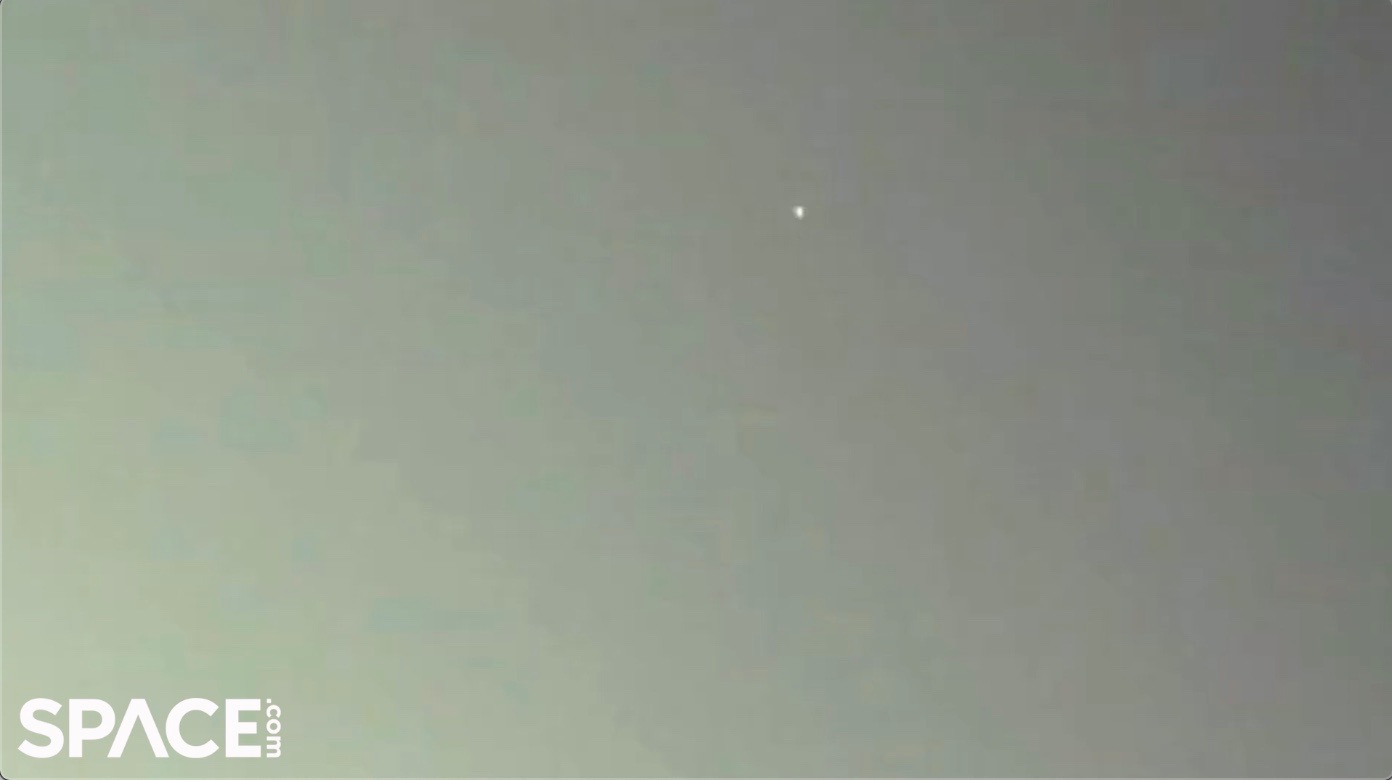NASA's Perseverance rover has given us an otherworldly skywatching treat — the minuscule Mars moon Deimos, twinkling in the dusty Red Planet skies.
"Skywatching is fun no matter where you are. I took this short time-lapse movie to watch for clouds and caught something else: look closely and you'll see Deimos, one of two moons of Mars," Perseverance team members wrote via the mission's official Twitter account Friday (Aug. 20).
Perseverance, which landed inside the 28-mile-wide (45 kilometers) Jezero Crater in February, usually has its head down, studying Red Planet rocks and dirt. The rover's main tasks, after all, involve hunting for signs of ancient Mars life and collecting dozens of samples for future return to Earth.
In photos: NASA's Mars Perseverance rover mission to the Red Planet

But the rover does look up from time to time, and not just to study clouds. In April and May, for example, Perseverance helped document the first few flights of its traveling companion, NASA's 4-pound (1.8 kilograms) Ingenuity helicopter. Ingenuity is still going strong — the pioneering little chopper recently aced its 12th Martian sortie — but Perseverance began focusing on its own science work a few months ago.
The 7.7-mile-wide (12.4 kilometers) Deimos orbits 14,576 miles (23,458 km) above Mars, completing one nearly circular lap around the planet every 30 hours. Mars' other moon, Phobos, is about 14 miles (22 km) in diameter and orbits at an altitude of just 5,738 miles (9,234 km). Most astronomers think both satellites are asteroids that were captured by Mars' gravity.
For comparison, Earth's moon is 2,159 miles wide (3,475 km) wide and lies 238,900 miles (384,470 km) from our planet on average. Our moon likely coalesced from material blasted into space by a titanic collision more than 4.4 billion years ago involving the proto-Earth and a Mars-size body called Theia, scientists say.
Get the Space.com Newsletter
Breaking space news, the latest updates on rocket launches, skywatching events and more!
NASA Mars rovers have caught glimpses of the planet's two tiny moons before. For example, Curiosity has captured multiple shots of Phobos and Deimos since touching down on the floor of Gale Crater in August 2012. Curiosity's views include amazing time-lapse videos of each moon passing in front of the sun, causing partial solar eclipses.
Mike Wall is the author of "Out There" (Grand Central Publishing, 2018; illustrated by Karl Tate), a book about the search for alien life. Follow him on Twitter @michaeldwall. Follow us on Twitter @Spacedotcom or Facebook.
Join our Space Forums to keep talking space on the latest missions, night sky and more! And if you have a news tip, correction or comment, let us know at: community@space.com.

Michael Wall is a Senior Space Writer with Space.com and joined the team in 2010. He primarily covers exoplanets, spaceflight and military space, but has been known to dabble in the space art beat. His book about the search for alien life, "Out There," was published on Nov. 13, 2018. Before becoming a science writer, Michael worked as a herpetologist and wildlife biologist. He has a Ph.D. in evolutionary biology from the University of Sydney, Australia, a bachelor's degree from the University of Arizona, and a graduate certificate in science writing from the University of California, Santa Cruz. To find out what his latest project is, you can follow Michael on Twitter.









